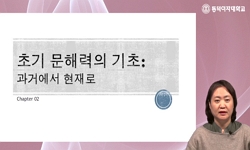본 연구는 동아시아에서 가장 이른 시기의 원림 기록으로 꼽히는 시경의 「대아․영대」에 등장하고 맹자의 「양혜왕」 장에 언급된 영대(靈臺)․영유(靈囿)․영소(靈沼), 일명 ...
http://chineseinput.net/에서 pinyin(병음)방식으로 중국어를 변환할 수 있습니다.
변환된 중국어를 복사하여 사용하시면 됩니다.
- 中文 을 입력하시려면 zhongwen을 입력하시고 space를누르시면됩니다.
- 北京 을 입력하시려면 beijing을 입력하시고 space를 누르시면 됩니다.

『시경』과 『맹자』에 기록된 영대(靈臺) 원림의 특성과 조선시대 인식† = Characteristics of Yeong-dae Garden Recorded in Shijing and Mencius, and Its Perception in the Joseon Dynasty†
한글로보기부가정보
국문 초록 (Abstract)
본 연구는 동아시아에서 가장 이른 시기의 원림 기록으로 꼽히는 시경의 「대아․영대」에 등장하고 맹자의 「양혜왕」 장에 언급된 영대(靈臺)․영유(靈囿)․영소(靈沼), 일명 영대 원림에 주목해 그 특성을 규명하고 조선시대 원림 실천과 관련된 인식의 양상을 논한다. 영대 원림은 유학에서 성인으로 꼽히는 주나라 문왕의 원림으로서 중국 최초의 황가원림이자 산과 물의 조합으로 구성된 역대 원림의 기본 형식으로 평가된다. 영대 원림의 특성은 시경과 맹자의 경전 본문과 주자 등이 서술한 주석, 삼보황도 등의 후대 문헌을 통해 구체화할 수 있다. 형식 측면에서는 높이 돋운 땅과 동물을 기르는 너른 영역, 물고기가 있는 못에 해당하는 세 공간 요소가 간결한 배치를 이루고, 기능 측면에서는 관측과 휴식이 복합되어 있으며, 상징 측면에서는 민심의 동반과 지도자의 무일(無逸)을 뜻한다는 점이 영대 원림의 특성이다. 조선시대 문헌에서 영대 원림은 주로 왕실과 관련된 사료에 등장하며 그 의미는 천체관측 기능의 관천대와 휴식․감상 기능의 원림 두 가지로 분화되는 양상을 보인다. 주자 성리학을 경유하여 주나라와 같은 고대의 이상국가를 재현하고자 했던 조선의 인물들에게 영대 원림은 왕실의 원림 실천을 경계하는 제어 장치이자 그 존재의미를 선정(善政)으로 확장하는 상징 기제로 작용하였다.
다국어 초록 (Multilingual Abstract)
Yeong-dae(靈臺), Yeong-yu(靈囿), and Yeong-so(靈沼) - so-called 'Yeong-dae Garden' – appear in the poem 'Dae-ah(大雅)․Yeong-dae(靈臺)' in Shijing(詩經) which is considered the record of the earliest garden in East Asia, in the chapter ...
Yeong-dae(靈臺), Yeong-yu(靈囿), and Yeong-so(靈沼) - so-called 'Yeong-dae Garden' – appear in the poem 'Dae-ah(大雅)․Yeong-dae(靈臺)' in Shijing(詩經) which is considered the record of the earliest garden in East Asia, in the chapter 'Yanghyewang(梁惠王)' of Mencius(孟子). Focusing on those records, this research clarifies their characteristics and discusses the aspects related to garden practices in the Joseon Dynasty. The Yeong-dae Garden is the garden of King Wen of the Zhou Dynasty, who is considered a sage of Confucianism. It is considered to be the first imperial garden in China, and the basic form of all gardens consists of mountains and water. The characteristics of Yeong-dae Garden can be specified through the texts of Shijing and Mencius, the comments written by Zhu Xi and others, and later literature, such as Sambohwangdo. The characteristics of Yeong-dae Garden are as follows: In terms of form, the three spatial elements corresponding to raised ground, a wide area for raising animals, and a pond with fish form a simple arrangement; in terms of function, it combines observation and rest; and in terms of symbolism, it signifies the companionship of the public sentiment and the leader's sincerity. In literature from the Joseon Dynasty, Yeong-dae Garden mainly appear in historical materials related to the King, and its meaning shows an aspect of differentiation into two functions: an observatory for astronomical observation and a garden for rest and appreciation. For the intellectuals of Joseon who sought to restore an ancient ideal state like the Zhou Dynasty through Zhu Xi's Neo-Confucianism, the Yeong-dae Garden served as a control device to warn against royal garden's practices and a symbolic mechanism to expand its meaning of existence to good politics.
동일학술지(권/호) 다른 논문
-
가로수 식재 특성에 따른 도시 열환경 개선 효과† - 대구광역시 가로수 온습도 관측을 바탕으로 -
- 한국조경학회
- 손정민
- 2024
- KCI우수등재
-
국내 녹색처방 도입과 정책체계 수립을 위한 기초연구† - 영국과 미국 사례 비교 분석을 통해 -
- 한국조경학회
- 김효주
- 2024
- KCI우수등재
-
- 한국조경학회
- 이제이
- 2024
- KCI우수등재
-
- 한국조경학회
- 조담빈
- 2024
- KCI우수등재




 ScienceON
ScienceON






